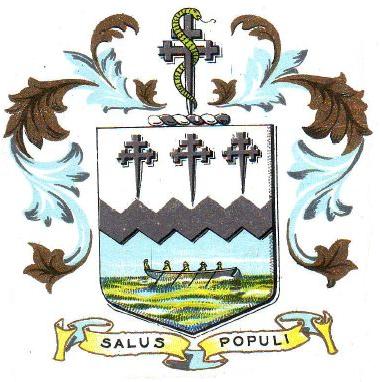|
Hunts Cross
Hunt's Cross is a suburb of Liverpool, England. It is located on the southern edge of the city, bordered by the suburbs of Woolton, Allerton, Speke and Halewood and delineated by the West Coast Main Line, Hillfoot Avenue, Merseyrail Northern Line and Mackets Lane. History Hunt's Cross was the name given to the ancient cross-roads at Speke Road, Hillfoot Avenue and Woodend Avenue, which formed the southern boundary of Much Woolton. The available evidence indicates that the cross-roads was called Hunt's Cross because of fox hunts meeting there before setting off. There was also a nearby monument called 'Hunt's Folly', shown on historical maps along with Honey Hall, Woodend Farm and Rose Farm. The 'Liverpool Hunt' is commemorated by a collection of fine china tableware by Booths. In the 1960s the medieval stone pedestal of the village cross had to be moved a short distance, to the corner of Hillfoot Road and Speke Road, to allow Hillfoot Avenue to be widened. There are similar cro ... [...More Info...] [...Related Items...] OR: [Wikipedia] [Google] [Baidu] |
Liverpool
Liverpool is a City status in the United Kingdom, city and metropolitan borough in Merseyside, England. With a population of in 2019, it is the List of English districts by population, 10th largest English district by population and its ESPON metropolitan areas in the United Kingdom, metropolitan area is the fifth largest in the United Kingdom, with a population of 2.24 million. On the eastern side of the Mersey Estuary, Liverpool historically lay within the ancient Hundred (county division), hundred of West Derby (hundred), West Derby in the county of Lancashire. It became a Borough status in the United Kingdom, borough in 1207, a City status in the United Kingdom, city in 1880, and a county borough independent of the newly-created Lancashire County Council in 1889. Its Port of Liverpool, growth as a major port was paralleled by the expansion of the city throughout the Industrial Revolution. Along with general cargo, freight, and raw materials such as coal and cotton ... [...More Info...] [...Related Items...] OR: [Wikipedia] [Google] [Baidu] |
Edwardian
The Edwardian era or Edwardian period of British history spanned the reign of King Edward VII, 1901 to 1910 and is sometimes extended to the start of the First World War. The death of Queen Victoria in January 1901 marked the end of the Victorian era. Her son and successor, Edward VII, was already the leader of a fashionable elite that set a style influenced by the art and fashions of continental Europe. Samuel Hynes described the Edwardian era as a "leisurely time when women wore picture hats and did not vote, when the rich were not ashamed to live conspicuously, and the sun really never set on the British flag." The Liberals returned to power in 1906 United Kingdom general election, 1906 and made Liberal welfare reforms, significant reforms. Below the upper class, the era was marked by significant shifts in politics among sections of society that had largely been excluded from power, such as Laborer, labourers, servants, and the industrial working class. Women started to play ... [...More Info...] [...Related Items...] OR: [Wikipedia] [Google] [Baidu] |
Ormskirk
Ormskirk is a market town in the West Lancashire district of Lancashire, England, north of Liverpool, northwest of St Helens, southeast of Southport and southwest of Preston. Ormskirk is known for its gingerbread. Geography and administration Ormskirk lies on sloping ground on the side of a ridge, whose highest point is above sea-level, at the centre of the West Lancashire Plain, and has been described as a "planned borough", laid out in the 13th century.Lancashire County Council Ormskirk historic town assessment, Lancashire County Council, 2006 Ormskirk is an , surrounded by the |
Kirkby
Kirkby ( ) is a town in the Metropolitan Borough of Knowsley, Merseyside, England. The town, historically in Lancashire, has a size of is north of Huyton and north-east of Liverpool. The population in 2016 was 41,495 making it the largest in Knowsley and the 9th biggest settlement in Merseyside. Evidence of Bronze Age activity has been noted though the first direct evidence of a settlement dates to 1086 via the Doomsday Book. The town was mainly farmland until the mid-20th century due to building of ROF Kirkby, the largest Royal Ordanance Factory filling munitions. In November 2020, Liverpool F.C. relocated its training facilities from the Melwood site in West Derby, to the town following the completion of the new AXA Training Centre. History It is believed that Kirkby was founded around 870 AD, due to archaeological evidence of Bronze Age settlement. Historically, it has been part of Lancashire. Kirk-by derives from the Northern dialect of Old English wor ... [...More Info...] [...Related Items...] OR: [Wikipedia] [Google] [Baidu] |
Southport
Southport is a seaside town in the Metropolitan Borough of Sefton in Merseyside, England. At the 2001 census, it had a population of 90,336, making it the eleventh most populous settlement in North West England. Southport lies on the Irish Sea coast and is fringed to the north by the Ribble estuary. The town is north of Liverpool and southwest of Preston. Within the boundaries of the historic county of Lancashire, the town was founded in 1792 when William Sutton, an innkeeper from Churchtown, built a bathing house at what is now the south end of Lord Street.''North Meols and Southport – a History'', Chapter 9, Peter Aughton (1988) At that time, the area, known as South Hawes, was sparsely populated and dominated by sand dunes. At the turn of the 19th century, the area became popular with tourists due to the easy access from the nearby Leeds and Liverpool Canal. The rapid growth of Southport largely coincided with the Industrial Revolution and the Victorian ... [...More Info...] [...Related Items...] OR: [Wikipedia] [Google] [Baidu] |
Merseyrail
Merseyrail is a commuter rail network serving the Liverpool City Region and adjacent areas of Cheshire and Lancashire. Merseyrail operates 66 railway stations across two lines – the Northern Line and Wirral Line, which are dedicated electrified lines that serve underground stations in the centres of Liverpool and Birkenhead. Merseyrail branding is also applied to stations and 'shared' services on the City Line, which are within the Liverpool City Region but operated by other train operating companies. The City Line services operate on the Liverpool to Manchester Lines and the Liverpool to Wigan Line using a mix of AC electric and diesel trains. The Merseyrail third rail network has 68 stations, 66 of which are managed by the company, and of routes, of which are underground. Prior to the COVID-19 pandemic in the United Kingdom, the network carried 31million passengers per year. The first part of the urban network was opened in 1977 by merging separate rail lines by ... [...More Info...] [...Related Items...] OR: [Wikipedia] [Google] [Baidu] |
Scouting
Scouting, also known as the Scout Movement, is a worldwide youth Social movement, movement employing the Scout method, a program of informal education with an emphasis on practical outdoor activities, including camping, woodcraft, aquatics, hiking, Backpacking (wilderness), backpacking, and sports. Another widely recognized movement characteristic is the Scout uniform, by intent hiding all differences of social standing in a country and encouraging equality, with neckerchief and campaign hat or comparable headwear. Distinctive uniform insignia include the fleur-de-lis and the trefoil, as well as Scout badge, merit badges and other patches. In 1907, Robert Baden-Powell, 1st Baron Baden-Powell, Robert Baden-Powell, a Lieutenant General in the British Army, held a Brownsea Island Scout camp, Scouting encampment on Brownsea Island in England. Baden-Powell wrote ''Scouting for Boys'' (London, 1908), partly based on his earlier military books. The Scout Movement of both Boy Scouts and ... [...More Info...] [...Related Items...] OR: [Wikipedia] [Google] [Baidu] |
Library
A library is a collection of materials, books or media that are accessible for use and not just for display purposes. A library provides physical (hard copies) or digital access (soft copies) materials, and may be a physical location or a virtual space, or both. A library's collection can include printed materials and other physical resources in many formats such as DVD, CD and cassette as well as access to information, music or other content held on bibliographic databases. A library, which may vary widely in size, may be organized for use and maintained by a public body such as a government; an institution such as a school or museum; a corporation; or a private individual. In addition to providing materials, libraries also provide the services of librarians who are trained and experts at finding, selecting, circulating and organizing information and at interpreting information needs, navigating and analyzing very large amounts of information with a variety of resources ... [...More Info...] [...Related Items...] OR: [Wikipedia] [Google] [Baidu] |
Rita Tushingham
Rita Tushingham (born 14 March 1942) is an English actress. She is known for her starring roles in films including ''A Taste of Honey'' (1961), '' The Leather Boys'' (1964), '' The Knack ...and How to Get It'' (1965), '' Doctor Zhivago'' (1965), and '' Smashing Time'' (1967). For ''A Taste of Honey'', she won the Cannes Film Festival Award for Best Actress, and Most Promising Newcomer at both the BAFTA Awards and Golden Globe Awards. Her other film appearances include '' An Awfully Big Adventure'' (1995), '' Under the Skin'' (1997), ''Being Julia'' (2004), and '' Last Night in Soho'' (2021). Early life Tushingham was born on 14 March 1942 in the Garston area of Liverpool, where her father was a grocer who ran three shops. She grew up in the Hunt's Cross district of the city. She attended the Heatherlea School in Allerton, the La Sagesse School in Grassendale (which later became part of St Julie's Catholic High School), and studied shorthand and typing at a secretarial scho ... [...More Info...] [...Related Items...] OR: [Wikipedia] [Google] [Baidu] |
Hunts Cross Railway Station
Hunts Cross railway station is a Grade II listed railway station in Hunt's Cross, Liverpool, England. It is situated on the southern branch of the City Line's Liverpool to Manchester route, and is the southern terminus of Merseyrail's Northern Line. History Originally built by the Cheshire Lines Committee and opened in May 1874, Hunts Cross was the only four-platform station on the line running between Liverpool Central and Manchester Central stations. It was also a junction at the southern end of the North Liverpool Extension Line to Gateacre, West Derby, north Liverpool docks and Southport. This line was closed in stages from 1952 to 1979 and is now part of National Cycle Network Route 62, the Trans Pennine Trail. The closure of the North Liverpool route left Hunts Cross to be served by the local service from Liverpool Lime Street to Warrington and Manchester. In 1983, Merseyrail's electrified Northern Line from Liverpool Central was extended to Hunts Cross from its ... [...More Info...] [...Related Items...] OR: [Wikipedia] [Google] [Baidu] |
Sports Car
A sports car is a car designed with an emphasis on dynamic performance, such as handling, acceleration, top speed, the thrill of driving and racing capability. Sports cars originated in Europe in the early 1900s and are currently produced by many manufacturers around the world. Definition Definitions of sports cars often relate to how the car design is optimised for dynamic performance, without any specific minimum requirements; both a Triumph Spitfire and Ferrari 488 Pista can be considered sports cars, despite vastly different levels of performance. Broader definitions of sports cars include cars "in which performance takes precedence over carrying capacity", or that emphasise the "thrill of driving" or are marketed "using the excitement of speed and the glamour of the (race)track" However, other people have more specific definitions, such as "must be a two-seater or a 2+2 seater" or a car with two seats only. In the United Kingdom, early recorded usage of the "sports ca ... [...More Info...] [...Related Items...] OR: [Wikipedia] [Google] [Baidu] |
Triumph TR7
The Triumph TR7 is a sports car manufactured in the United Kingdom from September 1974 to October 1981 by British Leyland Motor Corporation (BLMC), which changed its name to British Leyland (BL) in 1975. The car was launched in the United States in January 1975, with its UK home market debut in May 1976. The UK launch was delayed at least twice because of high demand for the vehicle in the US, with final sales of new TR7s continuing into 1982. It was initially produced at the Speke, Liverpool, factory, moving to Canley, Coventry, in 1978 and then finally to the Rover Solihull plant in 1980. Design and features The car, characterised by its "wedge" shape and by a swage line sweeping down from the rear wing to just behind the front wheel, was commonly advertised as "the shape of things to come". The design was penned by Harris Mann who also designed the wedge-shaped Princess. The car has an overall length of 160 inches (406 cm), width of 66 inches (168&nbs ... [...More Info...] [...Related Items...] OR: [Wikipedia] [Google] [Baidu] |
.jpg)









